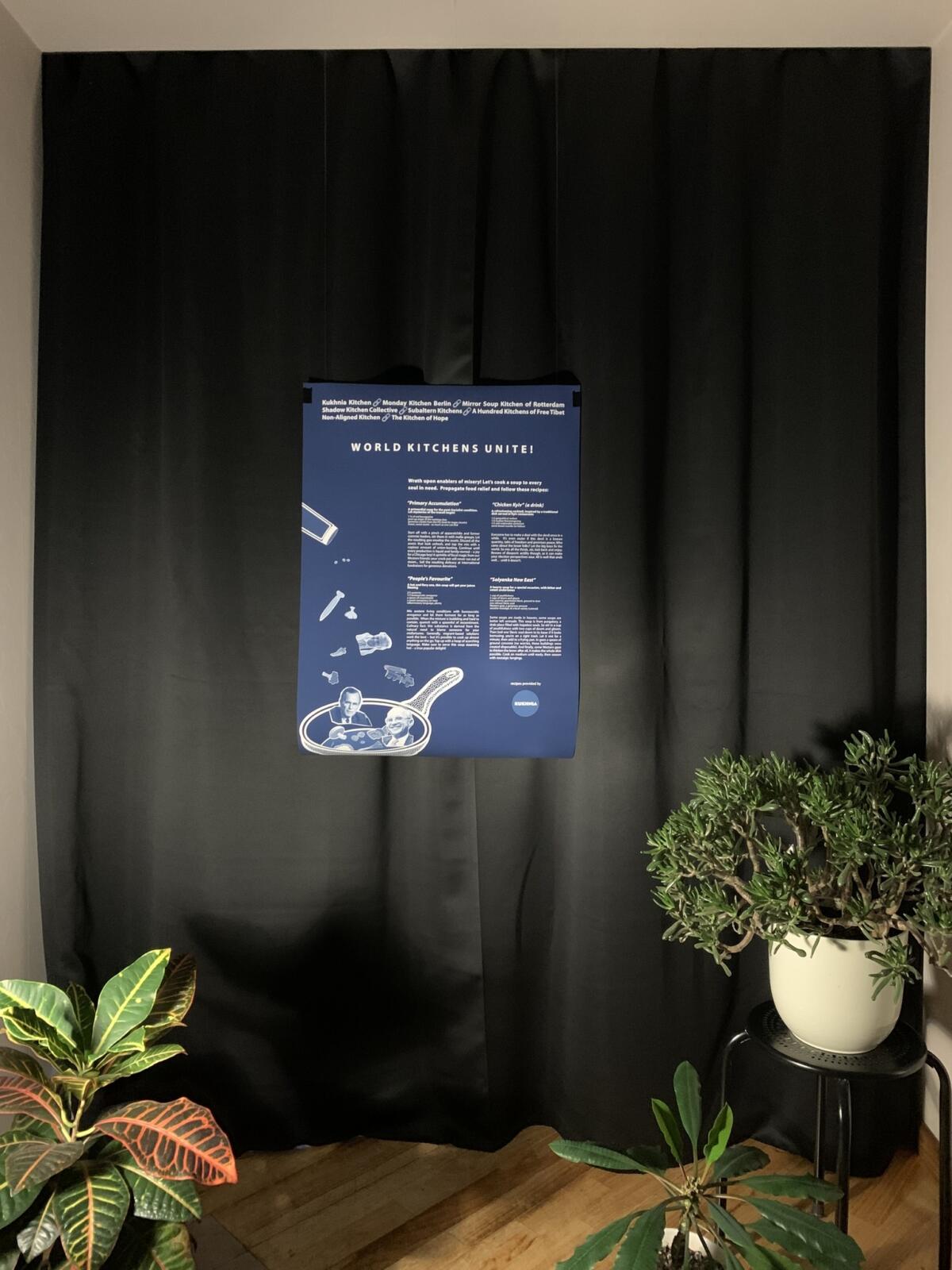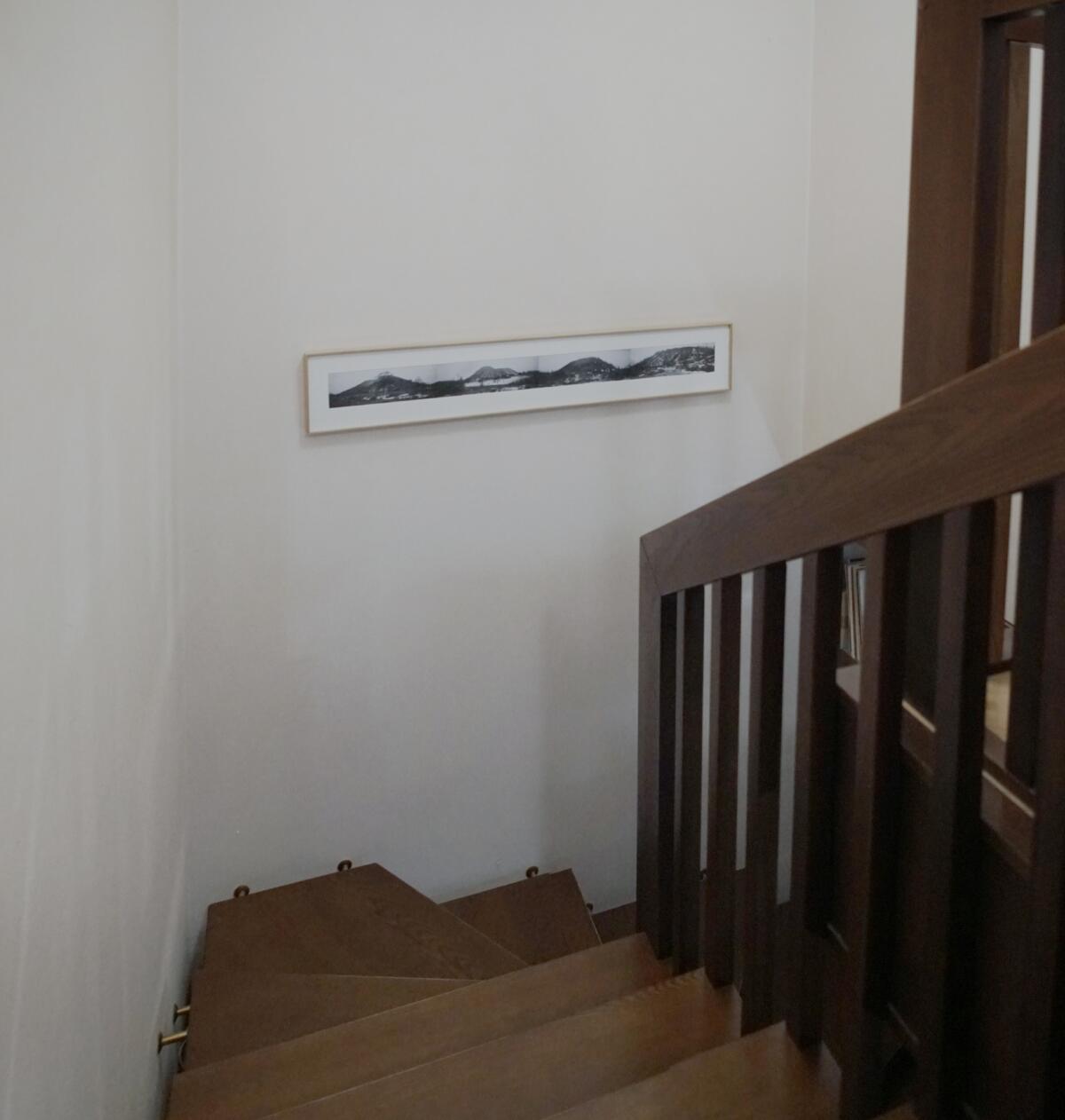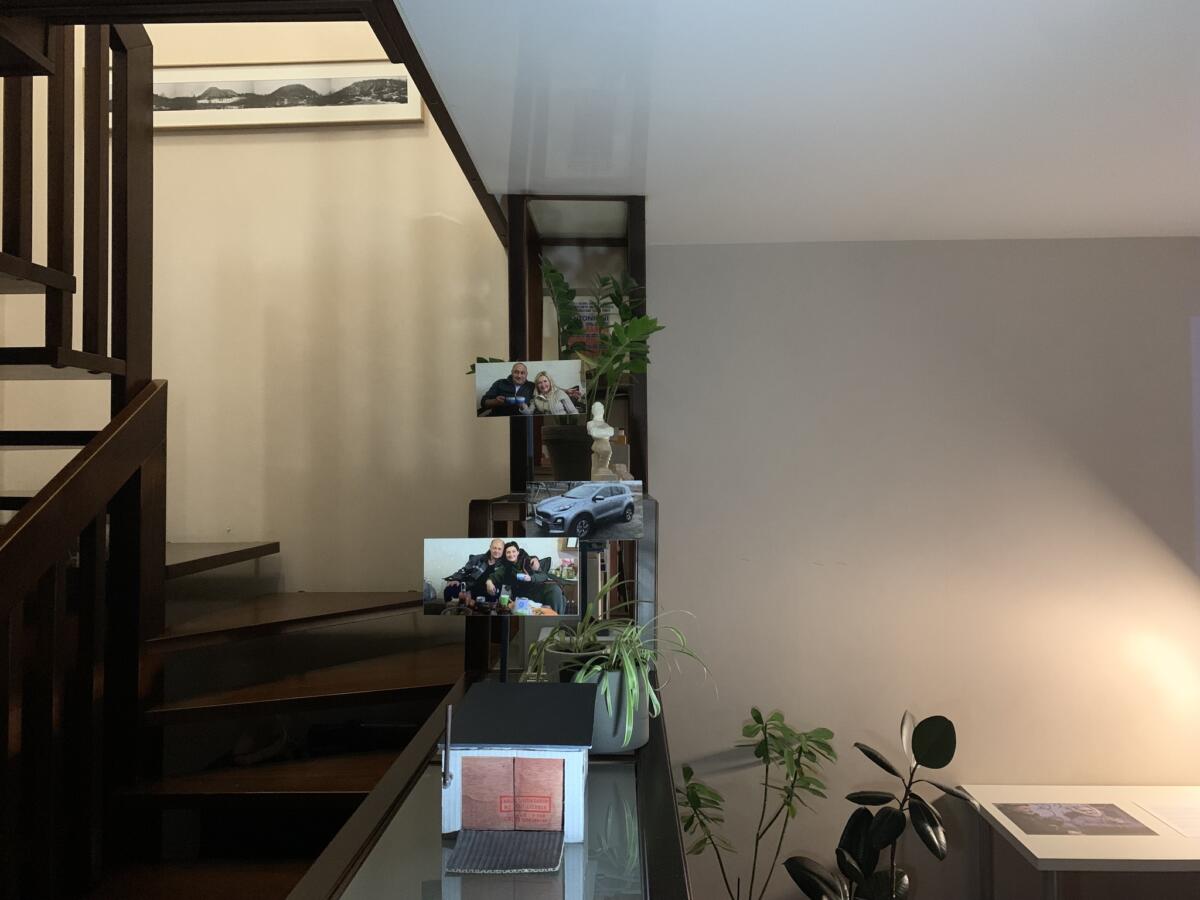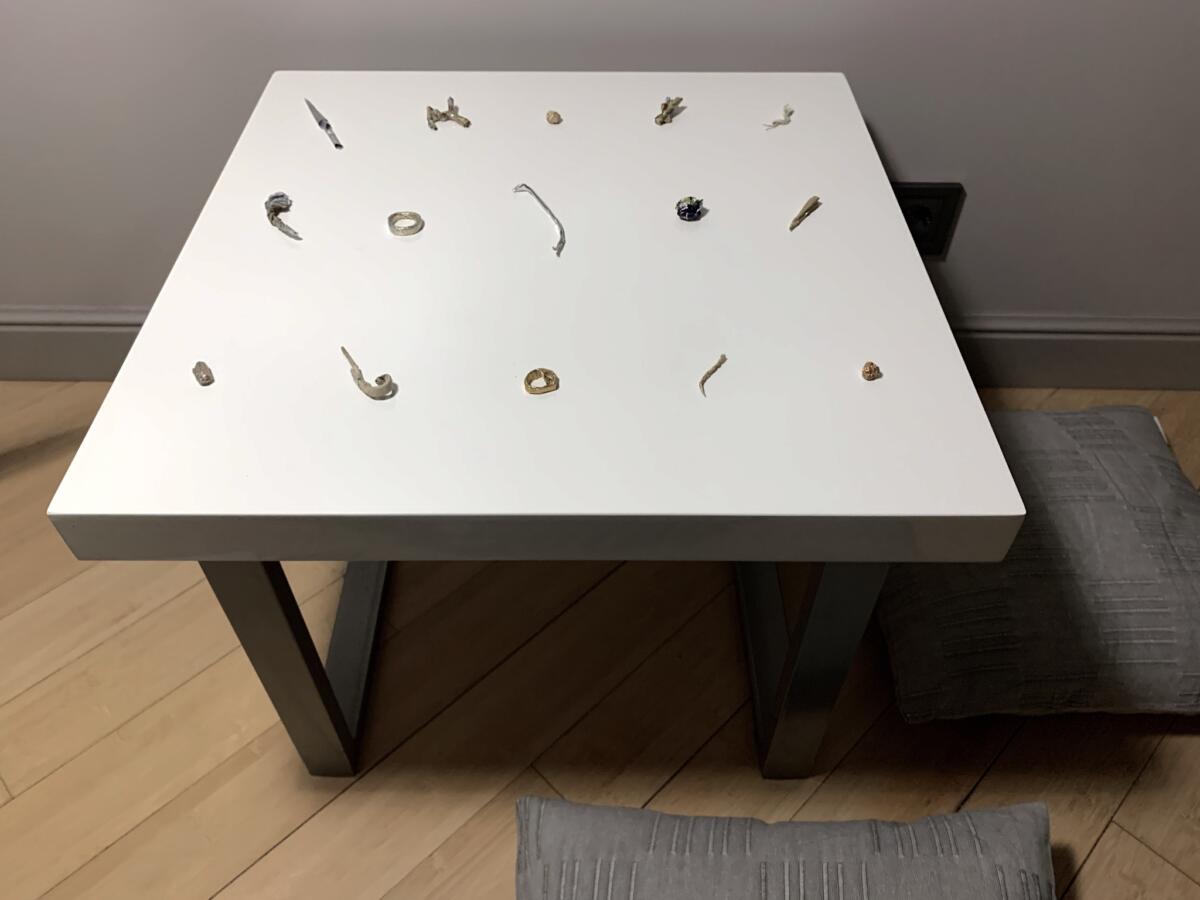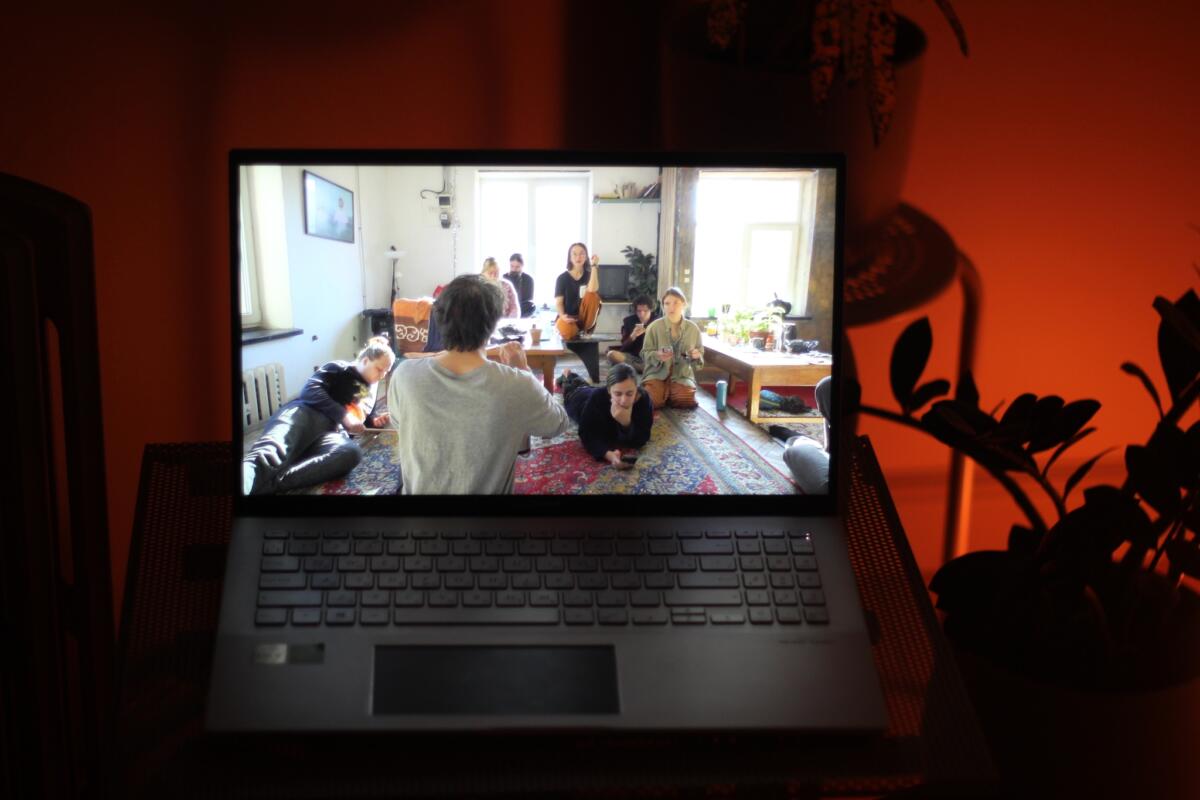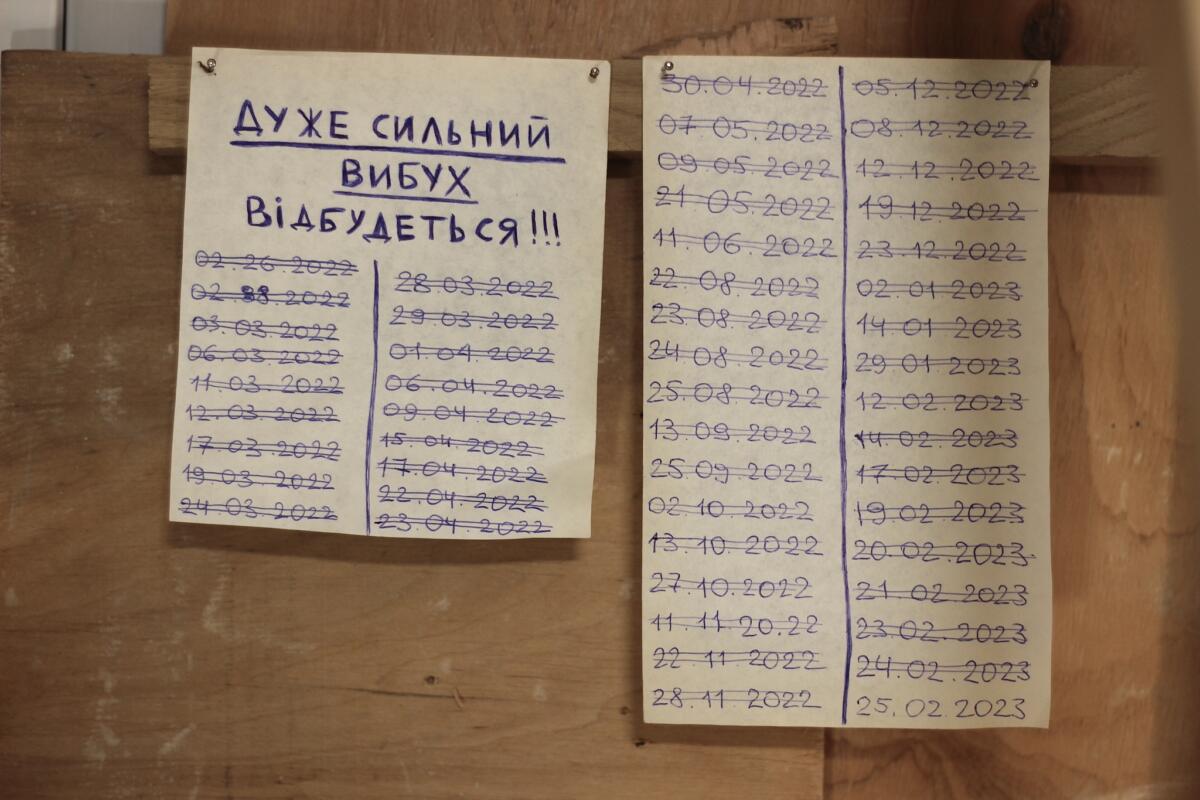
This text (and the exhibition it is devoted to) is deeply rooted in the urban life of Kyiv in light of the ongoing Russian war of aggression against Ukraine. Some of the narratives started one year ago when my husband and I decided not to leave for safer regions despite the battles happening in the nearest suburbs for a few very long weeks. The responsibility of looking after our house plants stopped us from considering displacement. In such a way, the importance of taking care of our non-human neighbors became a prominent theme in my subsequent thoughts and reflections. We soon realized that many others shared our sentiment, and could observe people returning to the war-torn cities of the Kyiv region immediately after the military left, with the intent of planting gardens and cultivating the land. I admire and relate to this resilience of the human spirit, and the capacity to find hope and renewal in difficult circumstances.
February 24, 2022 is marked by a number of unprecedented events. For many Ukrainian citizens, the day began earlier than usual due to the unnerving sound of explosions from shelling that had unexpectedly invaded our daily lives. The chaos disrupted our normal routines causing many planned events to be abandoned and forgotten, leaving us in a state of uncertainty and confusion. On this day, I didn’t turn 30 despite it being my birthday. On the contrary, I felt that this date no longer belonged to me as, from that morning onwards, I was constantly reading, hearing, and encountering references to “February 24” in news reports, private conversations, and even illustrations or contemporary cultural images.
One year later, I replaced my birthday celebration with an exhibition opening in my apartment. In the winter of 2023, it seemed that many acquaintances had left the country. The severe blackouts and a strong information campaign about a second attempt to seize Kyiv had caused some of my friends to plan their departure from the capital on the eve of the first anniversary of the full-scale invasion. However, on February 24th, there were so many people in attendance – over one hundred visitors – many of whom experienced this event as a form of a shared getaway from the pervasive anxiety and fear. The exposition continued for two days, during which the visitor experience was more traditional, featuring guided tours and a slower viewing pace. I worked with fifteen artists and collectives, mostly from Ukraine, but the geography of the international participants stretched from Hong Kong to Mexico. The selected artworks share the stories of individuals, families, and communities, revealing the tangles connected to this war.
Thickets, Groves, Woods and Bushes (Хащі, Рощі, Зарощі і Кущі) existed in the space of our apartment, amongst our personal belongings and plants, companions to the life of our family. In this environment, our daily practices became context for the works, which at the time of the war gained even more significance: taking care of houseplants, closely communicating with our friends, parents, and neighbors, helping others, and constantly returning home. Yet some tension is revealed when one discovers that the title is taken from an unfinished poem by my husband, curator and writer, Dmytro Chepurnyi. The fragment “Our homecoming will be greeted by thickets, groves, woods and bushes…” reflects Dmytro’s personal expectations for returning to his native city of Luhansk, which has been under Russian occupation for nine years now. Here he turns to the landscapes that emerge from the absence of humans, like abandoned houses or unattended gardens, where everyday life became essentially impossible during blockades or after military seizures of the territory. Being unable to leave, plants persistently thrive in these once human-ordered spaces, their shoots sprouting through cracks in the floors, clinging to building facades, reaching towards the sun. Thickets cover houses but also the scars of battlefields, representing nature’s unwavering ability to regenerate and renew itself.
One of the most impactful aspects of the exhibition was the theme of reclaiming one’s voice, which was highlighted by many of the works. Through the use of singing and humming, artists and performers were symbolically restoring a sense of control and belonging after a period of self-imposed restraint during the full-scale war. In times of terrifying and dramatic events happening in the country, silence often prevails as people tend to censor themselves. The value of any personal statement, reflection, or life event is questioned from the perspective of its significance. Despite curating several exhibitions and programs throughout the year, it was only through my birthday exhibition that I obtained enough freedom to reconcile the war’s interference in my own life, in particular, the very date which held great personal significance.
The exhibition began with a video by Daniil Revkovskiy and Andriy Rachinskiy, featuring the altered voice of a military man, who could be heard as soon as one entered the hall of the apartment building. For Sky. Invasion (2022) they collected footage of the sky that appeared both dangerously peaceful and bearing a concrete threat. The accompanying speech pronounces a military code based on Slavic first names; a visitor could recognize one’s own while watching the video or simply passing by. As guests entered the common hall on the fifth floor, they were embraced by the voice of Anton Saenko singing the words of the poem “In autumn, let grass burn…” by Vasyl Stus. The installation, Landscape (2022), comprises Saenko’s audio performance which emanated from a collection of bushy plants, and a minimalist painting of a circle which hung on an adjacent wall. When combined, these elements create a nostalgic image of a withered land of individual freedom, told through the words of a poet suppressed by a soviet regime.
The exposition continued inside the apartment with a combination of works by Yevgenia Belorusets and Francis Alÿs. The War Diary. Day 5. Day 18 (2022) is composed of a text and photograph from Belorusets’s experience in Kyiv during the offensive operation by Russian forces. The artist walks through the city center documenting the changes in daily life caused by the active phase of the war. Through her recordings she becomes a voice, sharing with the international community the stories of the people who inhabit the city and the challenges they face. This work creates a complex dialogue with the video Magnetic Shoes (1994) by Francis Alÿs. The short film documents the artist’s walk through the streets of Havana, during which he wears magnetic shoes that collect the metal rubbish from the ground while whistling. The documentation of the performance demonstrates how aimlessly walking through urban space can alter social dynamics, with the whistle emphasizing the performer’s presence and agency in this process.
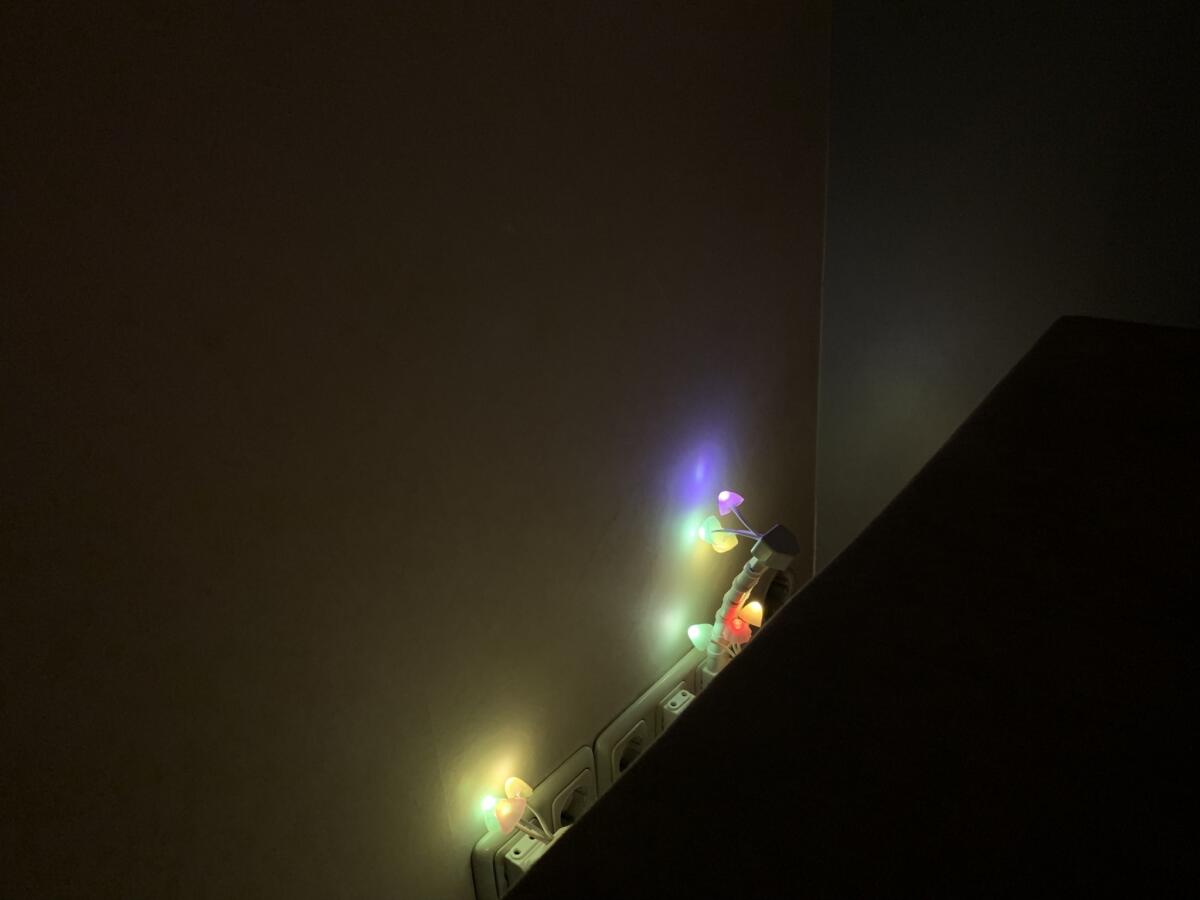

Hidden behind the sofa was Trevor Yeung’s work, Night Mushroom Colon (Flat in Kyiv), 2022. The Hong Kong-based artist used electric plug adapters and nightlights to create a sculptural installation with glowing, synthetic mushrooms. Originally conceived during the COVID-19 pandemic when quarantine restrictions were particularly stringent, these pieces served as companions to people in isolation. Emitting a soft, bioluminescent glow, the mushrooms serve as a reminder of non-human presence and the agency of multiple species. As you moved through the studio space toward the cooking area, you came across the next work, Kitchen Propaganda (2023), by Larion Lozovoy. With the beginning of the full-scale invasion, Lozovyi was forced to leave Kyiv for western Ukraine. In Lviv, he joined the volunteer initiative Kukhnia-Lviv. The artwork is heavily influenced by collective volunteer work in the kitchen, cooking for other displaced people. The artist transformed this thought-provoking experience into an ironic reflection on the current state of geopolitical power distribution. This space also held the article Landscape After The Battle — What We Can Learn From Our Ruins? by Dmytro Chepurnyi. The story accompanies Dmytro and me to Moshchun village (Bucha district) and invites the reader to engage with our family’s experience while reconstructing my grandparents’ summer house, which was damaged during an artillery battle.
The staircase between the floors became the platform for a dialogue between two works – one by Roman Khimei and the other by Svitlana Ulianova and Oleksandr Ulianov. Svitlana and Oleksandr, Khimei’s parents-in-law, are from the mining city of Myrnohrad in the Donetsk region. After February 24th they moved to Kolomyia in the Ivano-Frankivsk region, which is where Roman is from. Participating in the workshop for internally displaced people called Our Apartments, Houses, Cottages, Garages, Offices and Backyards, led by the artist collective Prykarpattian Theater, Ulianov’s family created a cardboard maquette of their garage, which they left behind while evacuating to a safer region. Roman’s work, Four Slag Heaps From Which One Can See The Occupied Donbas (2022), is the result of expeditions undertaken with Oleksandr, who is a retired miner. Through the artwork we observe the landscapes that are no longer accessible due to occupation, and are prompted to reflect on how to identify such a territory, despite its seemingly unchanged physical landscape. These narratives are also present in the work of Alevtina Kakhidze, from the series Strawberry Andreevna (2014–2018), where she explores the theme of military seizure of lands and shares the stories of those who remained in their homes under occupation. Through the drawings, Alevtina portrays her mother amplifying her voice to reach a wider audience in Ukraine and beyond. The other featured works are from Kakhidze’s recent series Wartime. A New Chapter of the Russia-Ukraine War Dated From 24.02.2022. Diary Drawn 26 km From Kyiv (2022), in which she draws from her own wartime experiences.
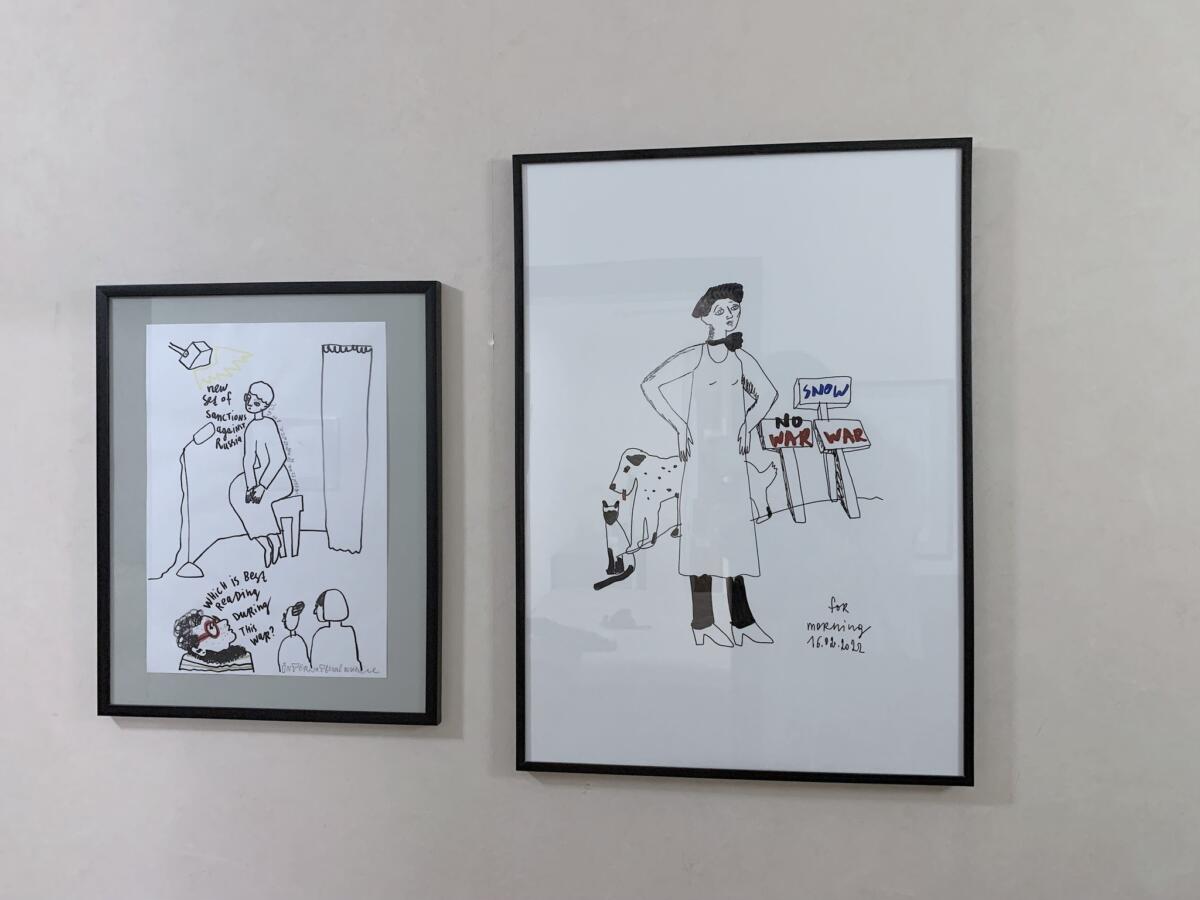
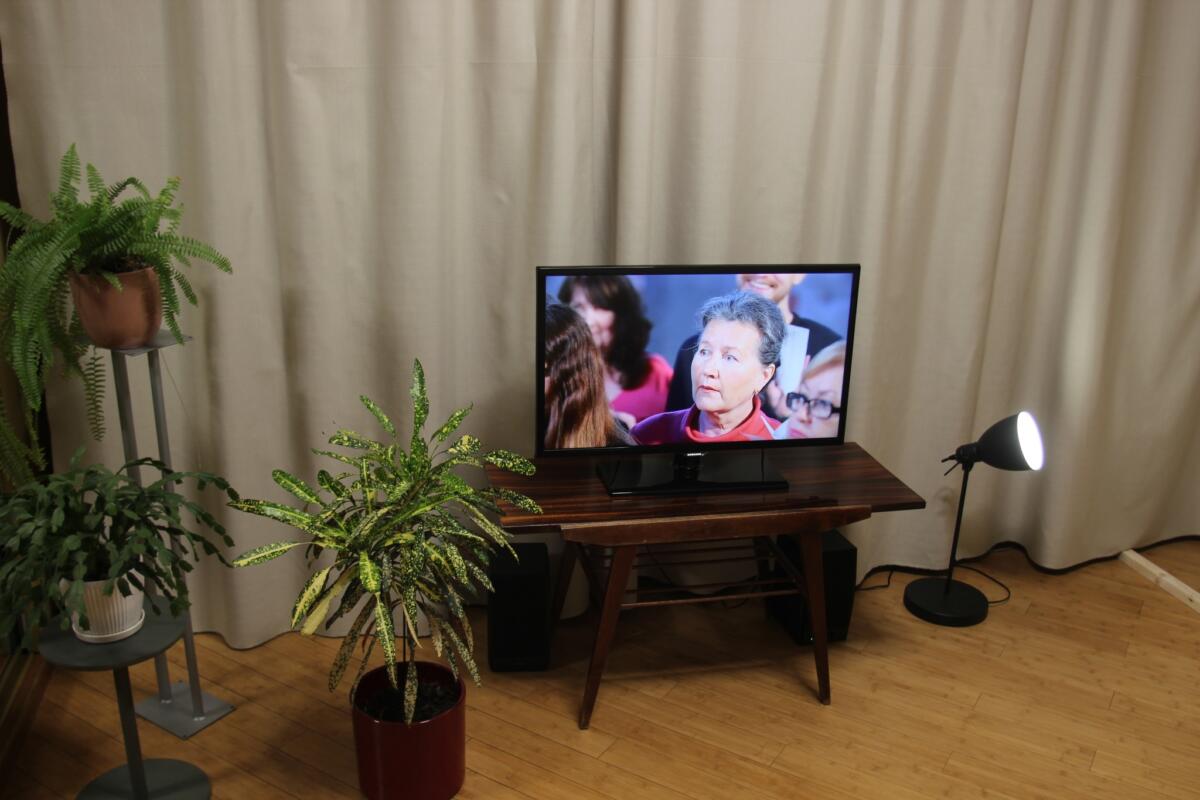
The guest room on the second floor featured three artworks: a short film by Andrėja Šaltytė and Leopold Tax, an installation by Daniil Revkovskiy and Andriy Rachinskiy, and a drawing by Sana Shahmuradova. The film, Gott Bewahre! (2021), is by Lithuanian-born artist Andrėja Šaltytė whose family is tied to the Luhansk region of Ukraine. In the work, she discovers a tension between the two languages being used in Ukraine. The setting is a rehearsal where opera singers perform challenging lyrics with various combinations of swear words. It is important to acknowledge the current context that influences the perception of this work, as the use of the Russian language has become increasingly taboo in the public sphere over the last year of the full-scale war. For the installation, Disaster (2023), the artist duo Revkovskiy and Rachinskiy revisited a character they created in 2020 who was previously featured in an exhibition at the artist-run gallery Detenpyla in Lviv. The protagonist, in anticipation of disaster, barricades the space and leaves notes to himself to reinforce certain parts of the construction. However, the unfortunate events of war make the prospect of personal disaster feel even more imminent. In contrast to the film and installation, the third artwork in the room was marked by its silence, opposing the more direct and concrete language of dates of events of imminent catastrophes. The painting entitled BUCHA (2022) by Sana Shahmuradova is a lament for the tortures and deaths revealed after the occupation of the cities of the northern region of Kyiv. As the frontline moves, tragic details become uncovered, revealing an environment of trauma and destruction.
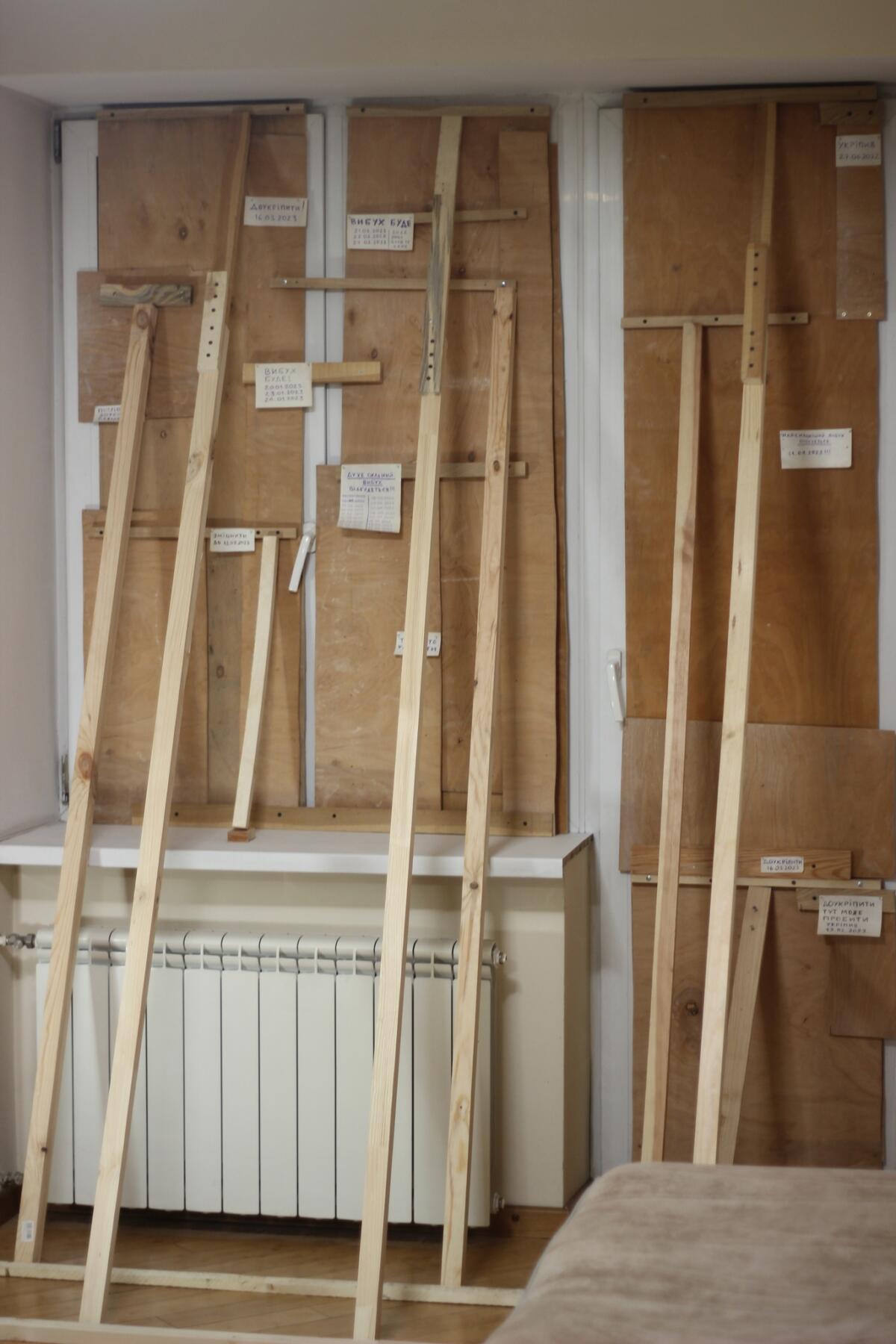
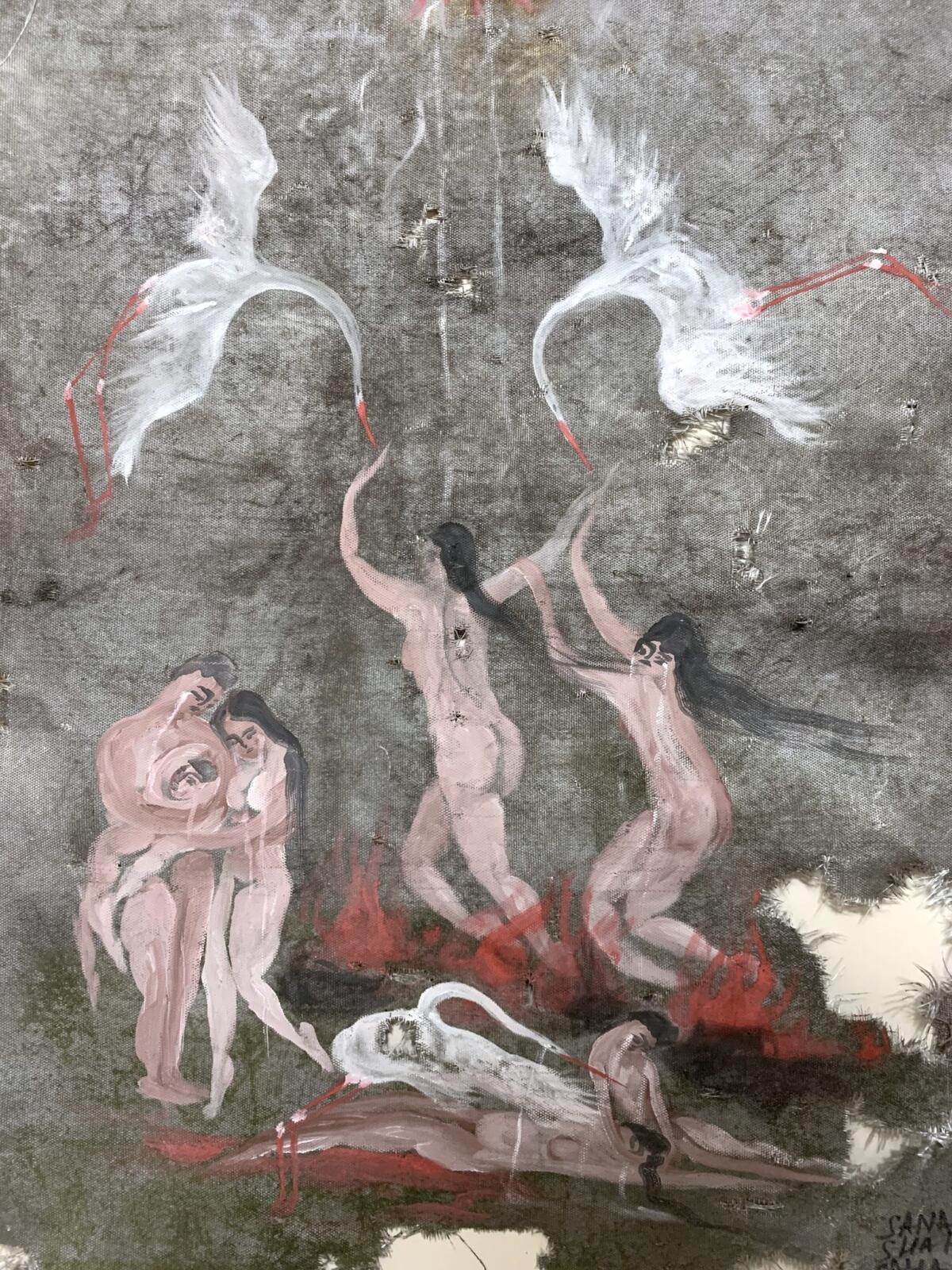
The last room of the exposition, our bedroom, provides an intimate space that primarily showcases personal treasures, memories, and other cherished items. Anna Zvyagintseva’s Sculptures of My Father (2013) was exhibited here. The small objects made of twisted foil from candy wrappers were displayed on a low side table. These sculptures were created unconsciously by Anna’s father while working in his studio, which she carefully collected to display in a museum-like vitrine. But the circumstances of their first viewing have drastically changed. In 2023, these objects are among Anna Zvyagintseva’s most valuable possessions which she brought along when she left the country to participate in the Jan van Eyck Academie program. Shortly after her departure from Kyiv, the Russian army tried to invade the city, putting all material and symbolic treasures at risk of destruction. This experience of the artist mirrors the actions of millions of people who hastily gathered their most meaningful belongings when the state of emergency was announced. The video installation from the project Your Rental Contract Has Been Terminated (2020), by Dariia Kuzmych, brought an additional moving ray of light into the room. The video is a patchwork of different perspectives on the temporary living spaces that became home for the artist.
The video, List of Improvement (2022), was the final point of the exhibition. It is a fragment of the coming musical performed by the team of Tomas Hazslinszky, Myro Klochko, Katya Libkind, Ira Loskot, Larion Lozovy, Olga Marusyn, Oleksiy Min’ko, Olena Mordyk, Oleksandr Pylypenko, Volodymyr Pylyprenko, Dmytro Silny, Dmytro Tkalenko, Tamara Tkalenko, Tonya Zelenina. Originating at Soma.majsternia in Lviv, a studio that connects refugees and local communities, providing them with cultural and physical activities (which also engages the same group of people as the Kukhnia-Lviv), the musical has become a collaborative action for the participants both with and without artistic backgrounds – all of them are currently displaced in Lviv due to unsafe living conditions in their hometowns. Men and women first make a list of the things they are missing during their stay in the shelter such as shelves, plants, private space, heaters, generators, friendship, or inspiration, and then sing the lists together, which is conducted by Oleksiy Min’ko.
I am grateful for the support and trust of every participant and visitor of the exhibition and I am pleased to summarize this experience through this text in order to make way for the next curatorial statements. My thinking regarding the exhibition was driven by the full-scale war of aggression of Russia and my experience of living in Ukraine during this protracted year. The significance of tending to non-human neighbors, such as house plants, impels me to explore how resilience, hope, and renewal emerges in difficult circumstances, and how art can foster a deeper understanding of coexistence. I strongly believe in the value of personal statements and reflection in times of trauma and destruction, and I hope that my birthday exhibition has created an open and meaningful dialogue, notably, about the collective encounters of communities during this war.
Edited by Katie Zazenski
Imprint
| Artist | Francis Alÿs, Yevgenia Belorusets, Alevtina Kakhidze, Roman Khimei, Dariia Kuzmych, Larion Lozovoy, Daniil Revkovskiy and Andriy Rachinskiy, Anton Saienko, Andrėja Šaltytė and Leopold Tax, Sana Shahmuradova, Svitlana Ulianova and Oleksandr Ulianov (from the installation of Prykarpattian Theater), Trevor Yeung, Anna Zvyagintseva, as well as the team of the musical (Tomas Hazslinszky, Myro Klochko, Katya Libkind, Ira Loskot, Larion Lozovy, Olga Marusyn, Oleksiy Min'ko, Olena Mordyk, Oleksandr Pylypenko, Volodymyr Pylyprenko, Dmytro Silny, Dmytro Tkalenko, Tamara Tkalenko, Tonya Zelenina) and Dmytro Chepurnyi with the text Landscape After The Battle. |
| Exhibition | Thickets, Groves, Woods and Bushes |
| Place / venue | Apartment exhibition in Kyiv |
| Dates | February 24th–26th, 2023 |
| Curated by | Oleksandra Pogrebnyak |
| Exhibition design | Yaroslava Kovalchuk |
| Photos | Dmytro Chepurnyi / Anton Saenko |
| Index | Alevtina Kakhidze Andrėja Šaltytė and Leopold Tax Anna Zvyagintseva Anton Saienko Asortymentna Kimnata Daniil Revkovskiy and Andriy Rachinskiy Dariia Kuzmych Dmytro Chepurnyi Dmytro Silny Dmytro Tkalenko Emergency Support Initiative Francis Alÿs Ira Loskot Katya Libkind Kyiv Kyiv Biennial Larion Lozovoy Larion Lozovy Myro Klochko Oleksandr Pylypenko Oleksandr Ulianov Oleksandra Pogrebnyak Oleksiy Min'ko Olena Mordyk Olga Marusyn Prykarpattian Theater Roman Khimei Sana Shahmuradova Svitlana Ulianova Tamara Tkalenko Tomas Hazslinszky Trevor Yeung Ukraine Volodymyr Pylyprenko Yaroslava Kovalchuk Yevgenia Belorusets |


